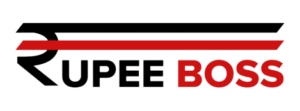1. Which types of MSMEs are covered by the Scheme's constitution?
Entities eligible for coverage under the scheme include MSME units such as Individuals / Proprietorships, LLPs, Partnerships, Private Limited Companies, or registered companies.
2. What are the eligibility criteria for MSMEs to benefit from the Scheme?
MSME borrowers/entities under stress, categorized as SMA2 and NPA accounts, eligible for restructuring according to RBI guidelines, and commercially viable per the assessment of lending institutions, can avail the Scheme's benefits.
3. What is the timeframe for the Scheme's duration?
The Scheme remains in effect for a maximum of 10 years from the date of availing the guarantee or until an aggregate guarantee amount of ₹20,000 crore is approved, or until the scheme's validity expires.
4. Is there a requirement for promoters to provide margin money for utilizing the sub-debt facility?
Yes, promoters need to contribute 10% of the sub-debt amount as collateral.
5. Are Fraud/Willful default accounts eligible for the scheme?
Accounts labeled as Fraud/Willful default will not be considered eligible for the scheme.
6. Can MSME accounts undergoing legal/recovery proceedings be covered by the Scheme?
Yes, MSME accounts subject to recovery proceedings, including actions like SARFAESI Sec. 13(2), 13(4), DRT, suit filing, or restructuring, can be considered based on the viability assessment according to RBI's restructuring guidelines.
7. What steps are followed for borrowers with multiple lenders?
If a borrower has existing limits with multiple lenders, they can utilize the CGSSD through a single lender. The lending MLI should obtain a declaration from the borrower about their other banking arrangements and non-utilization of funding under the scheme from other lenders.
8. Is enrollment in existing guarantee schemes necessary to avail sub-debt under DAF-SDSM?
No, it is not required for existing loans to be covered by guarantee schemes like CGFMU or CGTMSE to access sub-debt under DAF-SDSM.
9. What is the timeframe for loans provided under DAF-SDSM?
The sub-debt facility's tenor under DAF-SDSM will align with the lender-defined repayment schedule, up to a maximum of 10 years.
10. Will there be an interest rate cap for DAF-SDSM?
Yes, the applicable interest rate will adhere to the existing RBI guidelines.
11. What is the maximum tenor for loans provided under CGSSD?
The maximum tenor for loans under CGSSD is 10 years.
12. Is there a moratorium period under DAF-SDSM?
Yes, a maximum moratorium of 7 years can be applied to principal payments. During this period, only interest will be paid. Principal repayment is then required within 3 years after the moratorium ends.
13. Can sub-debt facilities be prepaid?
Yes, prepayment of loan/credit facilities is allowed without any additional charge.
14. Can closed businesses with NPAs avail the scheme?
No, businesses must be operational and in running condition to be eligible for the sub-debt scheme.
15. Can the entity itself receive funding under the CGSSD scheme?
No, the scheme provides funding to the promoters of the MSME unit, not to the entity itself.
16. Can MSMEs with exposure above Rs 25 crore receive additional funding under CGSSD?
Accounts with aggregate exposure above ₹25 Crore can be restructured upon asset class down-gradation, including NPAs.
17. How is eligibility determined for entities not required to provide Audited Balance Sheets?
For entities exempt from mandatory audits, lenders can use a CA's certificate or the latest ITR return to calculate promoter equity/debt contribution.
18. Can accounts classified as SMA 2 or NPA on February 29, 2020, and not irregular by April 30, 2020, access additional finance?
Only accounts classified as SMA-2 or NPA as of April 30, 2020, are eligible for additional finance under the scheme.
19. Are other legal entities like Trusts/Societies eligible for the scheme?
Sub-debt scheme loans can be extended to management committee executives of registered Trusts/Societies/HUFs, provided they fulfill eligibility criteria and meet commercial judgment standards.
20. Does the promoter need to provide 10% of the loan amount only as cash collateral?
Yes, the borrower's 10% contribution should be in the form of cash collateral.
21. Can accounts opened after March 31, 2018, avail benefits under CGSSD?
Accounts opened after March 31, 2018, are not eligible under the Scheme.
22. Can accounts restructured before CGSSD's introduction be covered under the scheme?
Accounts eligible for restructuring, including those restructured before CGSSD's introduction, can be covered, and such assistance is not considered repeated restructuring.
23. What does "regular in operation" refer to in specific clauses?
"Regular in operation" pertains to the consistent functioning of the MSME unit during certain fiscal years, irrespective of transactions in their bank accounts.
24. Are accounts opened after January 1, 2016, eligible under CGSSD?
No, accounts opened after January 1, 2016, are not eligible under the Scheme.
25. Is a Chartered Accountant's certificate required to substantiate sub-debt infusion?
A Chartered Accountant's certificate is not necessary. However, the lending MLI should ensure that the sub-debt/credit released to the promoter is reinvested as equity/quasi equity/sub-debt in the MSME unit.
26. Are there specific eligibility criteria or cut-off dates for MSMEs to benefit from the Scheme?
The scheme is applicable to MSMEs with accounts that were standard as of January 1, 2016, and had regular operations during specific fiscal years, subject to viability assessment by MLI. This includes accounts in regular operation or as NPAs during FY 2016-17, 2017-18, 2018-19, and 2019-20, even if they were not in regular operation during FY 2020-21 & FY 2021-22.


